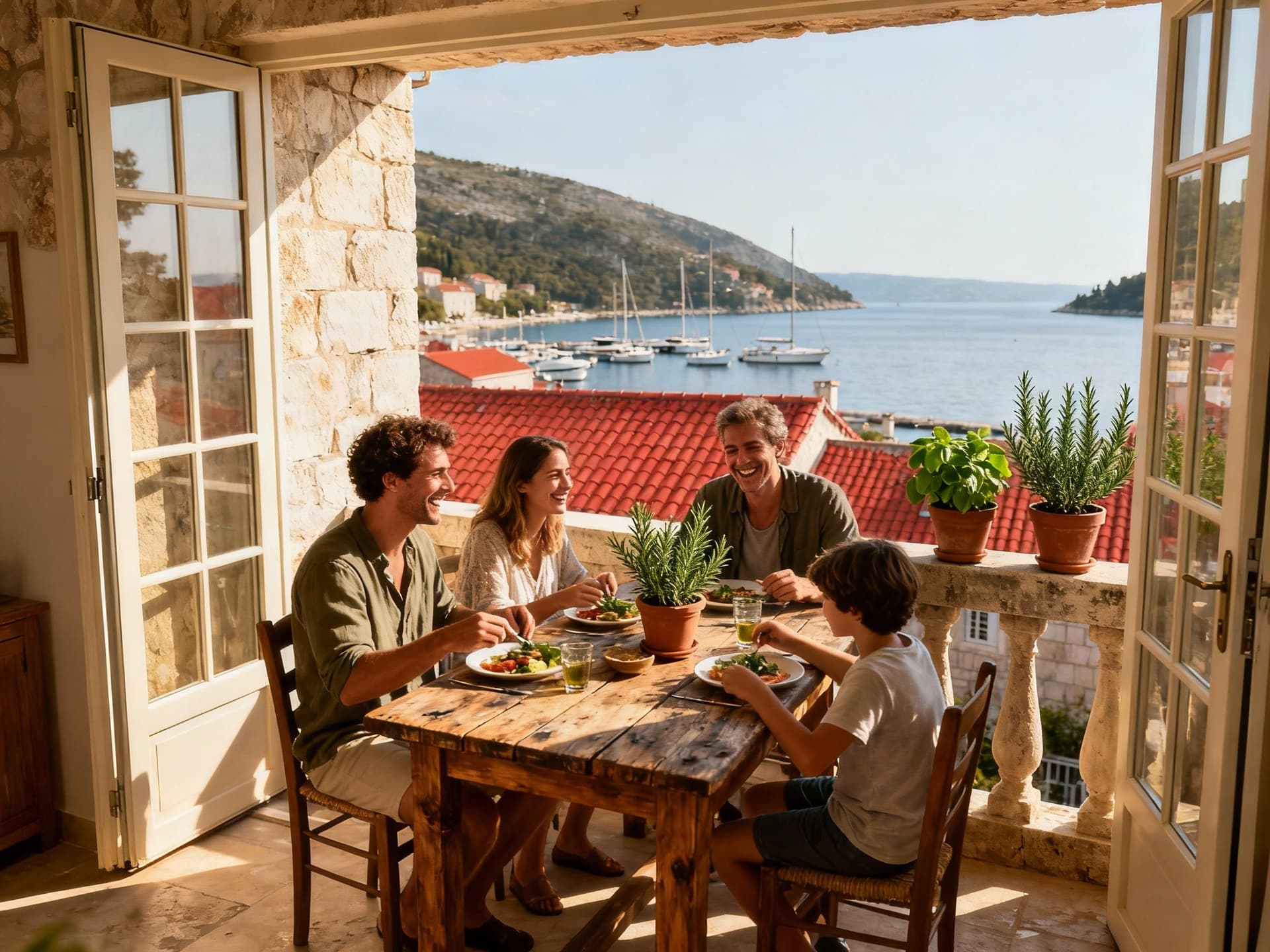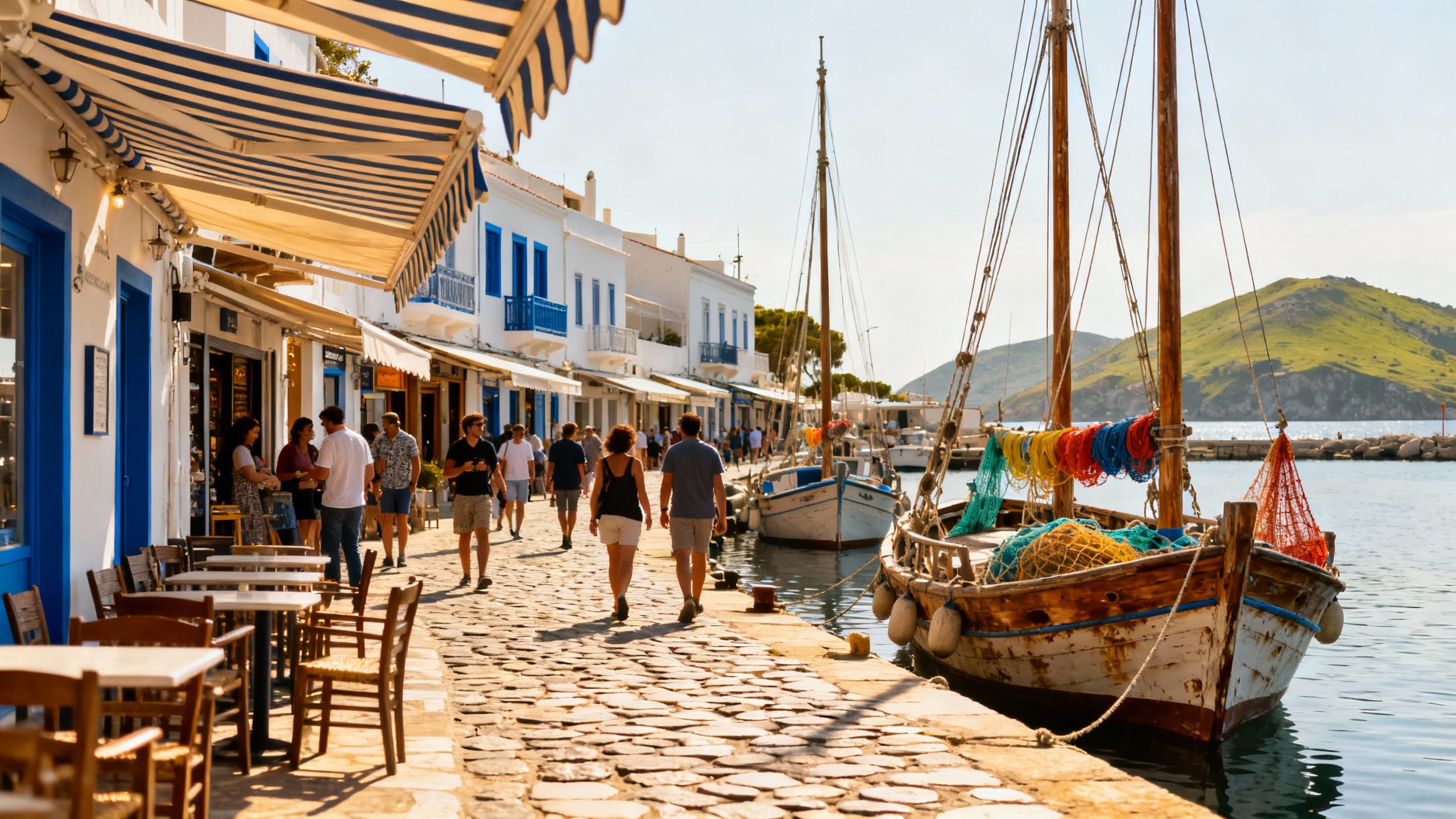Croatia: Seasonality & Policy Risks That Shift Yields
Croatia’s postcard appeal masks a market with measurable seasonal risk and policy shifts; model scenarios, prioritise transport nodes and stress‑test yields before buying.
Imagine sipping espresso on Split’s Riva at 9am, then switching to spreadsheets: Croatia feels like a holiday postcard, but beneath the sunlit cafes and pebble beaches there are measurable market rhythms. Recent official data show national dwelling prices rising double‑digits year‑on‑year, and that matters for buyers who want both lifestyle and returns. (Sources cited below.)
Living the Croatia lifestyle — sea, stone, and the slow city rhythm

Morning life in Croatia oscillates between markets and marinas: Zagreb’s bakeries fill the streets with warm loaves; in Dubrovnik the Old Town hums with guided groups and late‑night locals; in Istria small osterias pour Malvasia and conversation. That pattern—tourism by day, compact neighbourhood life by evening—drives demand for short‑term stays without erasing the year‑round rental base in city centres and university towns.
Neighborhood pulse: Zagreb, Split, Dubrovnik and the Adriatic fringe
Zagreb’s Trešnjevka and Donji Grad blend commuter convenience with steady long‑term rental demand from students and professionals. Split’s Veli Varoš and the Žnjan corridor cater to seasonal tenants plus a growing remote‑worker crowd. Dubrovnik’s old city is high‑value but volatile; nearby Lapad and Gruž offer more balanced yields because they combine resident populations with tourist spillover.
Food, markets and micro‑culture that shape where people actually live
Street markets (Dolac in Zagreb, Pazar in Split) and waterfront promenades determine daily choices: buyers pay premiums to be close to authentic local routines. That premium is part lifestyle, part risk‑adjustment—proximity to market, cafes and transport raises desirability and reduces vacancy risk for lettings aimed at residents rather than tourists.
- Daily lifestyle highlights: Dolac market (Zagreb); Riva promenade (Split); Lazareti arts quarter (Dubrovnik); Rovinj’s seaside cafés; Istrian hill towns and truffle routes; local ferry routes that connect islands to mainland.
Making the move: practical considerations that protect yield

The finance reality: national house price indices rose strongly through 2024–Q1 2025 (DZS reports ~13% annual increase for Q1 2025), while policymakers have signalled tax shifts targeting idle stock and short‑term lets. Those two facts create a specific risk profile: capital appreciation potential remains, but regulatory pressure on short‑term rentals and higher operating costs can compress net yields if you’re not explicit about use case and cash flow.
Property styles and what they mean for income
Stone town apartments deliver high seasonal rates but often need renovation and management; newer coastal developments are pricier per square metre but appeal to longer lets and remote workers; inland family homes offer lower entry prices and steadier long‑term tenancy. Choose property type according to target yield: short‑term tourism returns require higher occupancy and active management; long‑term rentals trade peak returns for predictability.
How local experts reduce sensitivity to shocks
- 1. Model two scenarios: tourist‑peak (June–September) and off‑peak (October–May), stress occupancy by 30% and calculate net yield. 2. Insist on line‑itemed operating costs from managers (utilities, maintenance, tourist tax). 3. Seek properties within 800m of transport or university nodes to reduce vacancy. 4. Obtain recent comparable transactions (last 12 months) for micro‑neighbourhood pricing, not county averages.
Insider knowledge — what expats wish they'd known (and how to avoid rookie mistakes)
Expat reality: language is learnable, but regulatory nuances are not. Many buyers overestimate short‑term rental returns and underestimate the tax and compliance burden introduced in late 2024–2025. Balance optimism about capital growth (house price indices show sustained gains) with a conservative rental assumption and an allowance for policy shifts targeting vacant housing.
Cultural and seasonal sensitivities that affect value
Seasons in Croatia are extreme: summer tourism concentrates cash flow into a few months, while winter occupancy drops in many coastal towns. Local festivals (e.g., Dubrovnik Summer Festival) can spike short‑term rates but also bring municipal restrictions. Factor seasonality into mortgage coverage and maintenance reserves rather than assuming year‑round parity.
- Red flags to watch: opaque ownership histories; properties listed as ‘off‑grid’ without permits; advertised gross yields without operating cost detail; listings relying solely on short‑term demand in small island settlements.
Practical checklist before you bid: confirm cadastral title, obtain a local‑language rental market report for the neighbourhood, run a three‑year cash‑flow stress test (30% lower occupancy, 10% higher operating costs), and verify any municipal restrictions on short‑term letting.
Conclusion: Croatia’s postcard charm coexists with measurable market momentum and emerging regulatory tweaks. Treat the market as a seasonal, policy‑sensitive cash‑flow asset: value the lifestyle, but underwrite the investment with scenario analysis, local comparables, and proven management. If you want the lifestyle without the yield surprises, target neighbourhoods with year‑round economies—Zagreb inner districts, Split’s transport corridors, or island ports with ferry links—and build a conservative rental model before you commit.
Swedish financier who guided 150+ families to Spanish title deeds since relocating from Stockholm in 2012, focusing on legal and tax implications.


